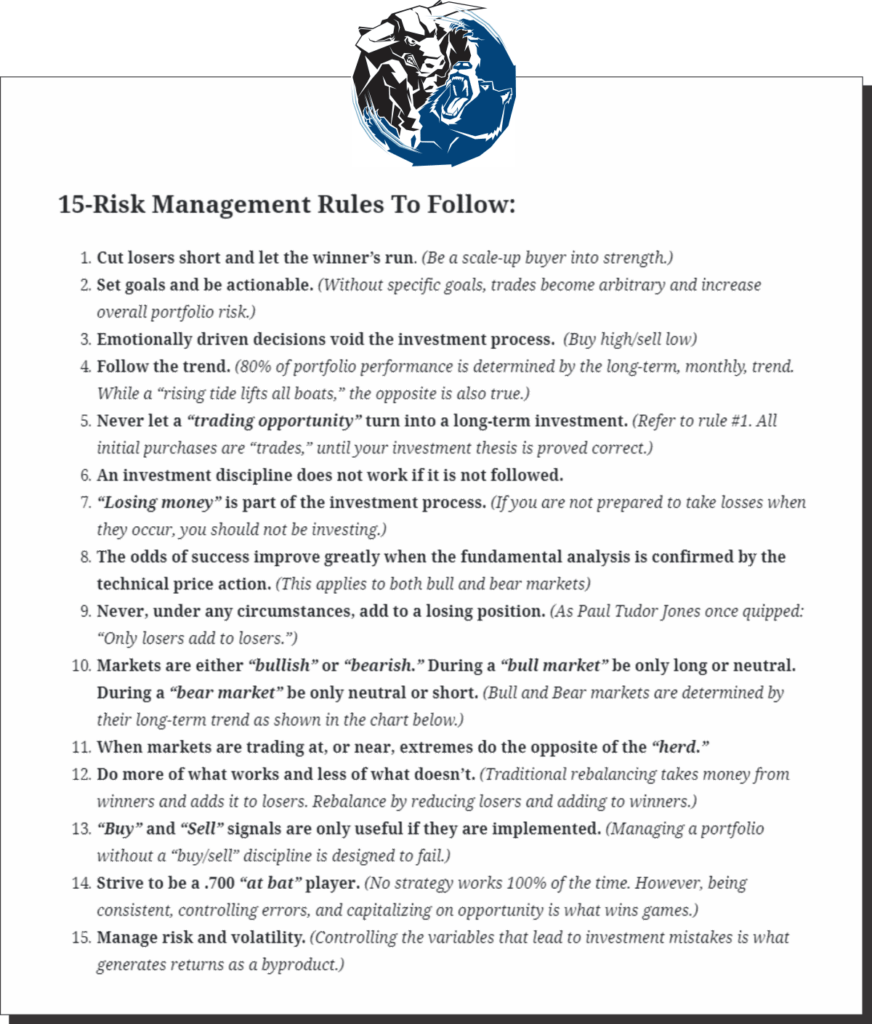When most people hear the word “risk,” they think about wild market swings, scary headlines, and losing money overnight, but Howard Marks, Co-Chairman and Co-Founder of Oaktree Capital Management, takes a different approach. In his new video series How to Think About Risk, Marks digs deep into what risk is and how investors should handle it. Spoiler alert: It’s not just about volatility.
The CFA Institute recently summarized the video stream, but I wanted to elaborate on some of Howard Mark’s views.
Let’s break down some key lessons from Marks that can help you rethink your investing approach to risk.
Risk Isn’t Just Volatility
One of the biggest takeaways from Marks’ series is the idea that risk and volatility aren’t the same thing. For years, many investors (and academics) have been taught that volatility—the ups and downs of stock prices—equals risk. However, Marks argues that this is a big misunderstanding.
Volatility is one part of the picture, but risk is the probability of losing money. Just because prices bounce around doesn’t mean you’re at risk of a big loss. Investors should focus on managing their downside, not just trying to avoid every little price swing.
The Magic of Asymmetry: More Upside, Less Downside
One of Marks’s most important lessons is the concept of asymmetric investing. Essentially, this means structuring your investments so that your potential gains are much larger than your potential losses. Sounds simple, right? But in practice, it’s challenging.
The goal isn’t to avoid risk altogether — that’s impossible. Instead, it’s about taking on calculated risks where the reward far outweighs what you put on the line. That’s the kind of smart risk-taking that leads to long-term success.
You Can’t Quantify Risk — And That’s Okay
Here’s the hard truth: you can’t measure risk in advance. Markets are unpredictable, and while we can guess what might happen, the future is uncertain. Even after the fact, you might not know how risky an investment is.
For example, just because an investment worked out doesn’t mean it wasn’t risky — maybe you just got lucky. Marks encourages investors to use their judgment and to recognize that past data won’t always predict future outcomes. Trust your instincts and look at the bigger picture.

The Risks We Don’t Talk About
When we think about risk, most of us focus on the risk of losing money. However, Howard Marks reminds us there are other risks we should be aware of, like missing out on gains by playing it too safe or being forced to sell investments during a market crash. Both can be just as damaging to our portfolios in the long run.
Sometimes, not taking enough risk can leave you behind, missing out on opportunities that could have helped you grow your wealth. Marks emphasizes the importance of balancing risk and reward to ensure you’re not just protecting against losses but also positioning yourself for future gains.
The Future Is Unpredictable
Howard Marks draws on some big thinkers like Peter Bernstein to explain that the root of all risk is our inability to predict the future. Sure, we can anticipate what might happen, but there will always be surprises we can’t see coming. And those unexpected events — like financial crises or major market shifts — can have the biggest impact on your investments.
So, what can you do? Be prepared for anything. Marks stresses the importance of acknowledging what you don’t know and managing your portfolio accordingly.
Risk Can Be Deceptive
Here’s a fascinating insight from Marks: Risk isn’t always what it seems. When the market feels the safest, that’s often when it’s often the riskiest. Think about it — when everything is going smoothly, people tend to take more risks, which can lead to market bubbles and crashes.

On the flip side, it might be a better time to invest when things look risky. It’s counterintuitive, but risk can often be highest when it feels lowest. The lesson here? Don’t get too comfortable when the market seems calm — that’s when mistakes are most likely to happen.
Price Matters More Than Quality
Here’s a myth that Howard Marks shatters: High-quality assets aren’t always safe, and low-quality assets aren’t always risky. The key is the price you pay. You can buy the best company in the world, but if you overpay, it’s still a risky investment. On the other hand, a lower-quality asset can be a great investment if you get it at the right price.
The takeaway? Focus on value. It’s not about finding the best companies — it’s about finding good companies at the right price.
More Risk Doesn’t Always Equal More Return
We’ve all heard the saying, “High risk, high reward.” But Marks says that’s not always true. Just because an investment is riskier doesn’t mean it will deliver better returns. Taking on too much risk can lead to significant losses.
Investors need to be careful about chasing returns without fully understanding the risks. The goal should be to weigh the possible outcomes and ensure the potential reward is worth your risk.
You Can’t Avoid Risk — But You Can Manage It
At the end of the day, Marks clarifies that risk is an unavoidable part of investing. You can’t completely avoid it, but you can manage it. That means constantly evaluating the risks in your portfolio, staying prepared for unexpected events, and focusing on asymmetric opportunities where the upside outweighs the downside.

Final Thoughts And Rules
Robert Rubin, former Secretary of the Treasury, changed the way I thought about risk when he wrote:
“As I think back over the years, I have been guided by four principles for decision making. First, the only certainty is that there is no certainty. Second, every decision, as a consequence, is a matter of weighing probabilities. Third, despite uncertainty we must decide and we must act. And lastly, we need to judge decisions not only on the results, but on how they were made.
Most people are in denial about uncertainty. They assume they’re lucky, and that the unpredictable can be reliably forecast. This keeps business brisk for palm readers, psychics, and stockbrokers, but it’s a terrible way to deal with uncertainty. If there are no absolutes, then all decisions become matters of judging the probability of different outcomes, and the costs and benefits of each. Then, on that basis, you can make a good decision.”
It should be obvious that an honest assessment of uncertainty leads to better decisions, but the benefits of Rubin’s approach go beyond that. Although it may seem contradictory, embracing uncertainty reduces risk while denial increases it. Another benefit of “acknowledged uncertainty” is it keeps you honest. A healthy respect for uncertainty and a focus on probabilities drives you never to be satisfied with your conclusions. It keeps you moving forward to seek more information, question conventional thinking, continually refine your judgments, and understand that certainty and likelihood can make all the difference.
Here are the 15-Risk Management Rules we follow every day. Hopefully, this will give you a start on developing your own.

The reality is that we can’t control outcomes; the most we can do is influence the probability of certain outcomes. This is why the day-to-day management of risks and investing based on probabilities rather than possibilities are important not only to capital preservation but also to investment success over time.
The key takeaway? Don’t fear risk — understand, manage, and use it to your advantage.
That’s it for today! If you want more insights like these, subscribe to our newsletter for regular updates on market trends and investing strategies.
.
The post How Howard Marks Thinks About Risk…And You Should Too appeared first on RIA.

